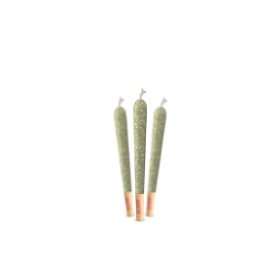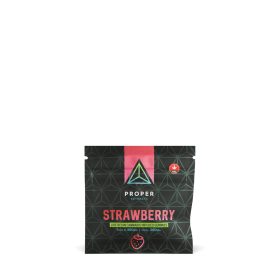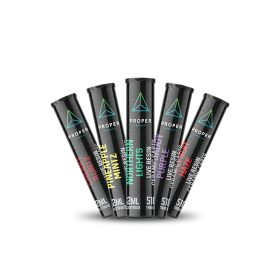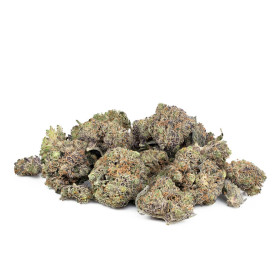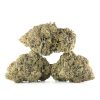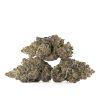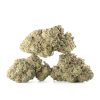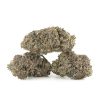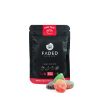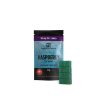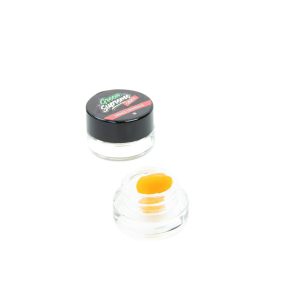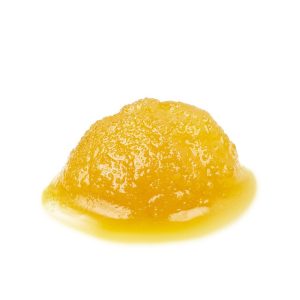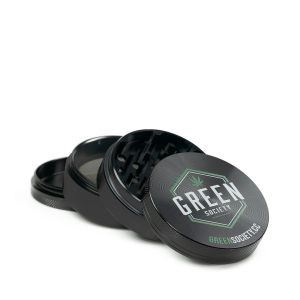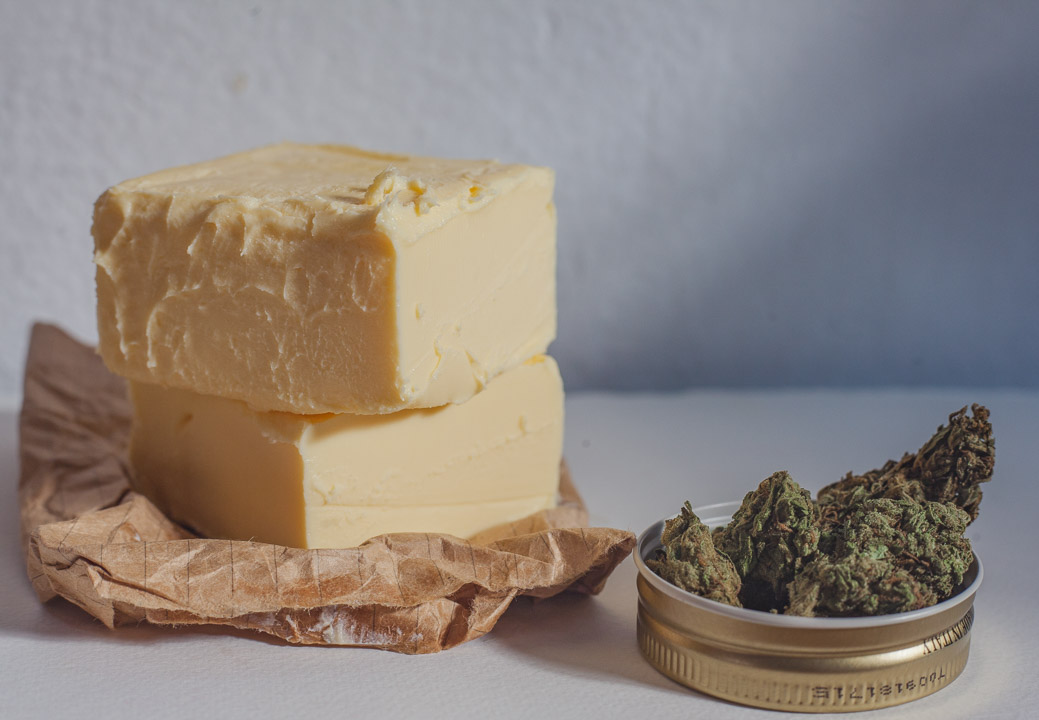Marijuana connoisseurs and foodies may have heard of the term “cannabutter,” which, as you may have guessed, is cannabis-infused butter! Created by incorporating cannabis flower buds or directly utilizing CBD oils, cannabutter is often used for making cannabis edibles and baked goods, but can also be incorporated into savoury dishes as an herb-butter garnish. Making your own cannabutter can be a complex and time-consuming process, but it is well worth the work as it opens up a whole new world of experiences with food in a fun and creative way with cannabis!
First off, what is CBD?
CBD is short for cannabidiol, which is one of the most commonly found active ingredients or “cannabinoids” in hemp cannabis plants. The other most common compound is THC, or tetrahydrocannabinol. THC is perhaps more well-known to the general populace as this is the ingredient that gives users the stoned, cerebral head-high that is often associated with marijuana usage. CBD, on the other hand, is not psychoactive, so it does not give this cerebral experience, but is yet highly effective in other areas. As the research stands today, CBD actually has a wide range of medical and health benefits, and is now becoming more popular for consumption with new food trends like cannabutter!
Why should I make cannabutter?
Health Benefits of CBD
Numerous studies have shown that CBD can be effective in treating mental health disorders such as anxiety, post-traumatic stress disorder and depression. While there are medications available for these disorders, it can often lead to substance abuse or encourage addictive behaviours, while CBD is a natural alternative that is neither addictive or habit-forming.
CBD also helps treat chronic pains by interacting with neurotransmitters and impacting the human body’s endocannabinoid system (ECS) which regulates a range of bodily functions, including its immune response system. It has been found highly effective in treating pains associated with arthritis and multiple sclerosis. CBD’s stress-reducing properties and richness in antioxidants are also believed to be linked to lowering high blood pressure, which can benefit heart health and prevent damage.
Source: https://www.healthline.com/nutrition/cbd-oil-benefits#section4
Practicing Routines
In most households, butter is one of those essential ingredients that is used daily in the kitchen. For bakers in particular, it is an absolute must! Those who already use CBD for medical usage will find that having CBD infused in butter can be a good way of remembering to take regular dosages by incorporating it into their favourite recipes and meals.
Make It Your Own!
All in all, cannabutter is just a great way of making food exciting as you can customize it to your liking. So, if you have a favourite strain with a particular high or flavour profile that you enjoy, or a CBD oil that benefits you more than others, why not incorporate it into your favorite cooking or baking recipes by coming up with your own cannabutter and subbing it in place of the regular?
Making Your Own CBD or Cannabis-Infused Butter
Remember to keep an eye on temperatures when cooking or baking with CBD, as butter burns easily and CBD itself can be cooked out with too high of heat, and this can vary between methods. Keep in mind that when choosing your butter, unsalted or salted can be a better option depending on what you’ll be using your cannabutter for; salted is great for cooking, while unsalted can be better for baking as you can control the amount of salt for your baked goods.
We will go over two ways of making cannabutter:
- By infusing concentrated CBD oil with butter
- By decarbing cannabis flowers and then infusing them with butter
Both methods will be reviewed below!
Infusing CBD Oil and Butter
This is a fool proof recipe for beginners, and is recommended for those seeking non-psychoactive experiences while reaping the health benefits of their cannabutter. It only requires 3 ingredients, including a pre-existing concentrated CBD oil of your choice (psst, we recommend the Faded Cannabis Co. CBD Tincture!) and a few short and simple steps!
What you’ll need:
- 2 cups butter
- 1 cup water
- 20 ml CBD oil
What to do:
- Cut butter into smaller pieces to aid the melting process.
- Add butter, water, and CBD oil into a small pot.
- Cook over low heat for 2 hours, occasionally stirring. Remember not to go over low heat as higher temperatures can cook off the CBD or burn your butter.
- Allow butter to cool, then cover the container and refrigerate overnight.
- Once butter solidifies, drain out any excess water and pat with paper towels to remove further moisture.
- Refrigerate your finished CBD-infused butter for freshness!
It’s as easy as that! Now you’ve got your CBD infused cannabutter to use at your disposal! Those seeking a balanced CBD/THC experience can try an extract that balances both active ingredients, like the Faded Cannabis Co. Halley’s Comet Tincture; alternatively, you can try the decarbing method!
Decarbing Cannabis to Infuse with Butter
Another way of creating your own cannabutter is via decarboxylating, or “decarbing” cannabis flowers. This process helps extract THC as it converts the non-active cannabinoid, THCA (tetrahydrocannabinolic acid), into the active THC during cooking; this is also what happens when you smoke or vaporize cannabis. This decarbing method allows for further customization as it lets you choose your favourite indica, sativa or hybrid strain to infuse; starting with about 15% THC is ideal as consuming cannabis can be more potent compared to when it is smoked. So, particularly if you are looking for THC highs and psychoactive experiences with food rather than infusing it with a pre-extracted, non-psychoactive CBD oil, decarbing is the way to go!
What you’ll need
- 1 cup butter
- 1 cup water
- 1 cup or 7-10 grams of your choice of cannabis flowers
What you need to do:
First, Decarbing
- Preheat the oven to 220 degrees fahrenheit.
- With your strain of choice, lightly grind the cannabis flowers/buds with a hand grinder, scissors or with your fingers. The end result should still be leafy, do not grind into a powder.
- Place leafy remains on a baking sheet for 1 hour.
Cooking and Infusing
- Mix 1 cup of water and 1 cup of butter into a sauce pot on low heat, and allow to melt. (As in the first recipe, feel free to chop butter into small pieces to aid the melting process.)
- Add decarbed cannabis, and allow to simmer for 2-3 hours. Stir frequently and keep an eye on the mixture to ensure it doesn’t boil or burn, keeping temperature low. Add more water if needed throughout to maintain a cooler temperature and to avoid the butter from scorching.
- Once thickened, strain with a metal sieve or a cheesecloth into a container. Allow for it to strain freely for 5-10 minutes; do not push it through the sieve or cloth as this can result in adding bitter plant bits into the butter.
- Allow butter to cool, then cover the container and refrigerate overnight.
- Once butter solidifies, drain out any excess water and pat with paper towels to remove further moisture.
- Refrigerate your finished cannabis-infused butter for freshness!
Voila! You have your own cannabutter!
With whichever method you decide to opt for, be sure to microdose to test the potency of your new and freshly made cannabutter just to be safe. Allow 45 minutes to an hour for the effects to kick in. Everyone experiences cannabis and CBD differently, so before going all out with trying out new recipes, start simple (buttered toast, for example) and listen to your body to gauge whether you’ll need more or less. Like with everything else, practice makes perfect. Experiment with different cannabutter dosages, or even try different types of strains to see what works–and tastes–best for you! Once you’ve perfected your own unique cannabutter, you can incorporate it into your favourite recipes!

